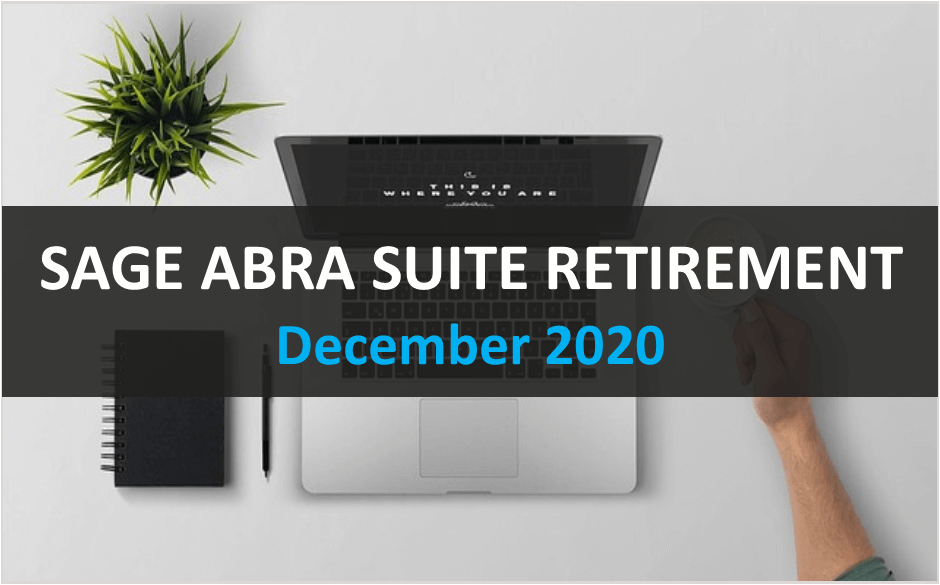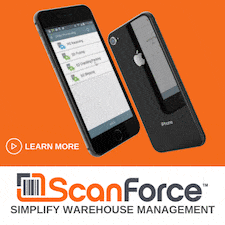A few years ago, Sage announced the impending "End of Life" for Sage Abra Suite in order to give customers time to prepare a transition. Sage has now announced an official retirement date of December 28, 2020. Read on to learn what it means for Sage Abra Suite customers.
Why is the Product Being Retired?
According to official statements from Sage, they view a product’s ‘end of life’ event as a part a natural cycle that drives new technology and product innovation.
But for the most part, product retirement was somewhat forced with the 2015 announcement by Microsoft that they were ending support for Visual FoxPro - the underlying technology architecture that runs Sage Abra Suite. At that point, it was only a matter of time before applications running on FoxPro (like Abra) would either no longer work or have to be totally redeveloped on different technology.
But for the most part, product retirement was somewhat forced with the 2015 announcement by Microsoft that they were ending support for Visual FoxPro - the underlying technology architecture that runs Sage Abra Suite. At that point, it was only a matter of time before applications running on FoxPro (like Abra) would either no longer work or have to be totally redeveloped on different technology.
How Long Will Sage Abra Keep Working?
While Sage has continued to support the software (but not the technology) by releasing bug fixes and quarterly tax updates, continued product improvements and introduction of new features has slowed and are unlikely going forward.
The final product update for Sage Abra Suite will be the Q3 2020 update, which will be available in September 2020. In addition, access to the support center for assistance will be available until December 28, 2020, and then no longer accessible after that date.
The final product update for Sage Abra Suite will be the Q3 2020 update, which will be available in September 2020. In addition, access to the support center for assistance will be available until December 28, 2020, and then no longer accessible after that date.
What’s the Next Step?
For most Abra Suite customers, the next logical step is a migration to the sister product Sage HRMS. Sage HRMS is HR and payroll software that runs on modern technology including the Microsoft SQL Server Database.
Beyond the underlying technology, there are functional benefits of migrating to Sage HRMS as well. It’s packed with advanced features that streamline every aspect of human resource management from hire to retire - including recruiting and onboarding, benefits management, time and attendance, workforce analytics, and the popular Sage employee self service module.
Sage HRMS Payroll is where Abra Suite customers see the most significant changes. In particular because of the SQL database, there’s no need to have users exit the system while running payroll. There’s also a wide range of payroll features in Sage HRMS that simply don’t exist in Abra Suite.
Beyond the underlying technology, there are functional benefits of migrating to Sage HRMS as well. It’s packed with advanced features that streamline every aspect of human resource management from hire to retire - including recruiting and onboarding, benefits management, time and attendance, workforce analytics, and the popular Sage employee self service module.
Sage HRMS Payroll is where Abra Suite customers see the most significant changes. In particular because of the SQL database, there’s no need to have users exit the system while running payroll. There’s also a wide range of payroll features in Sage HRMS that simply don’t exist in Abra Suite.
The Sage HRMS Migration Process
Because HR and payroll processes for each company are unique, it’s important to create a detailed migration plan. It’s more than just a typical product update or version upgrade.
The best course of action is to contact your Sage partner who can help guide the process, migrate your historical data, and provide training as needed to ensure a smooth transition.
If you aren't working with a Sage partner, click below to find one in your area.
The best course of action is to contact your Sage partner who can help guide the process, migrate your historical data, and provide training as needed to ensure a smooth transition.
If you aren't working with a Sage partner, click below to find one in your area.



